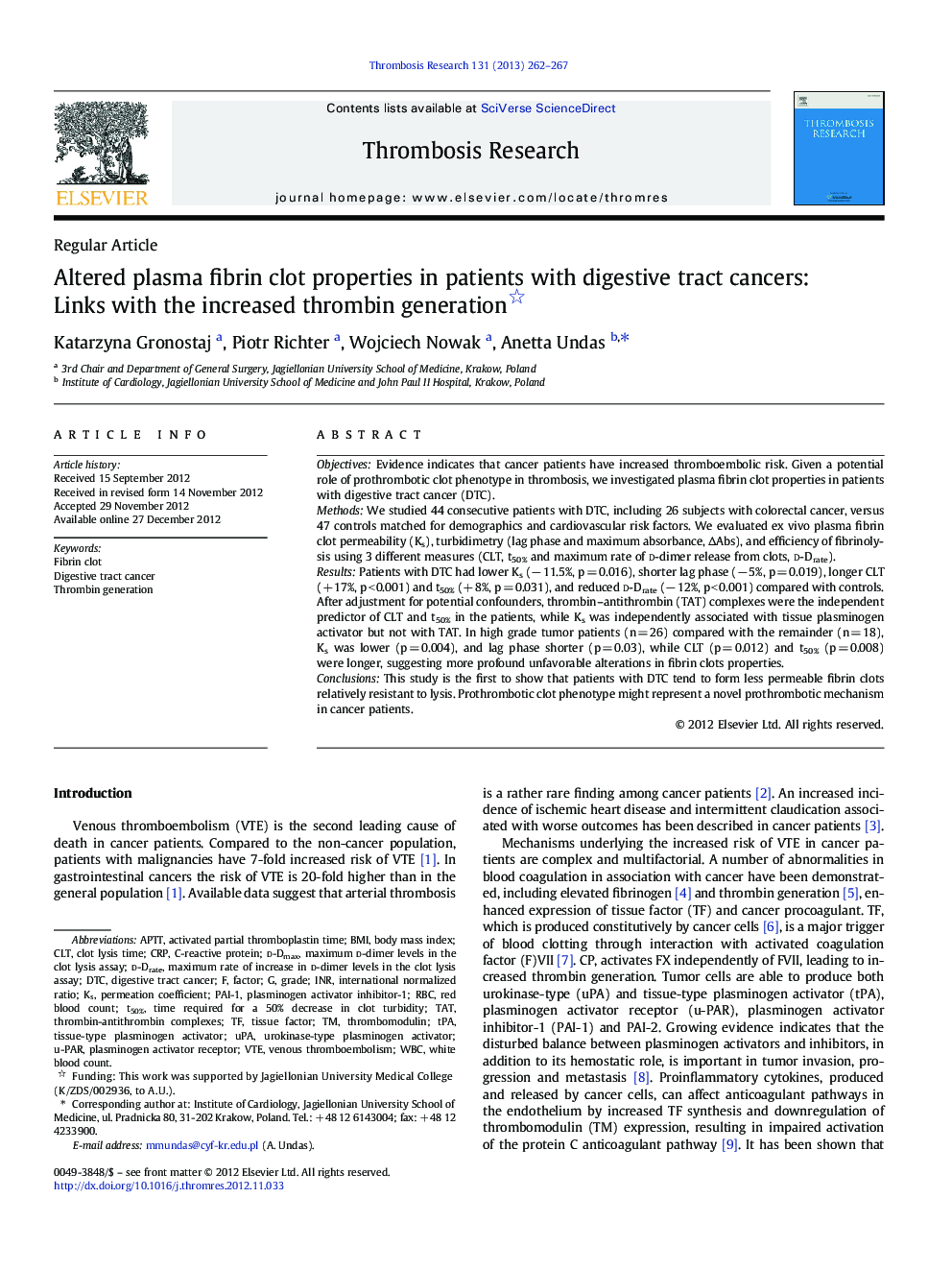| Article ID | Journal | Published Year | Pages | File Type |
|---|---|---|---|---|
| 6002696 | Thrombosis Research | 2013 | 6 Pages |
ObjectivesEvidence indicates that cancer patients have increased thromboembolic risk. Given a potential role of prothrombotic clot phenotype in thrombosis, we investigated plasma fibrin clot properties in patients with digestive tract cancer (DTC).MethodsWe studied 44 consecutive patients with DTC, including 26 subjects with colorectal cancer, versus 47 controls matched for demographics and cardiovascular risk factors. We evaluated ex vivo plasma fibrin clot permeability (Ks), turbidimetry (lag phase and maximum absorbance, ÎAbs), and efficiency of fibrinolysis using 3 different measures (CLT, t50% and maximum rate of d-dimer release from clots, d-Drate).ResultsPatients with DTC had lower Ks (â 11.5%, p = 0.016), shorter lag phase (â 5%, p = 0.019), longer CLT (+ 17%, p < 0.001) and t50% (+ 8%, p = 0.031), and reduced d-Drate (â 12%, p < 0.001) compared with controls. After adjustment for potential confounders, thrombin-antithrombin (TAT) complexes were the independent predictor of CLT and t50% in the patients, while Ks was independently associated with tissue plasminogen activator but not with TAT. In high grade tumor patients (n = 26) compared with the remainder (n = 18), Ks was lower (p = 0.004), and lag phase shorter (p = 0.03), while CLT (p = 0.012) and t50% (p = 0.008) were longer, suggesting more profound unfavorable alterations in fibrin clots properties.ConclusionsThis study is the first to show that patients with DTC tend to form less permeable fibrin clots relatively resistant to lysis. Prothrombotic clot phenotype might represent a novel prothrombotic mechanism in cancer patients.
